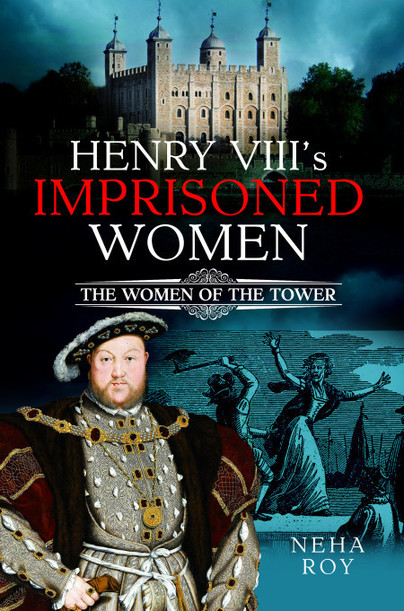Women’s History Month – Neha Roy
The Tudor Matriarch: Catherine of Valois
More often than not, we refer to Margaret Beaufort as the matriarch of the Tudor dynasty. While we can agree on the fact that she was one of the major players in the victorious side of the Wars of the Roses who almost single handedly masterminded her son’s victory at the Battle of Bosworth, we generally tend to forget the woman who first brought the Tudor name into the limelight. Owen Tudor would have just been any other inconsequential Welsh soldier in the royal army had he not succumbed to the charms of the widowed Queen of England: Catherine of Valois.
The youngest daughter of King Charles IV of France and his Queen, Isabeau of Bavaria, Catherine was born on 27 October 1401 at the royal palace of Hôtel Saint-Pol. Some say that she was neglected by her parents but many believe otherwise. Evidences of toys being bought for a young Catherine survives till date. Also, she was sent to a convent in Poissy for her education.
Catherine was initially considered as a potential bride for King Henry IV of England but the king breathed his last before it could come to fruition. His successor, King Henry V, re-opened the marital negotiations and succeeded in winning her hand. With her came in her large dowry and an acknowledgement of Henry V’s right to rule over France.
Despite the French defeat at the Battle of Agincourt, Henry V did not rescind the marriage talks with Catherine and finally met her for the first time at Meulan. The Treaty of Troyes, a peace agreement between England and France, was drawn up and signed in the year 1420 wherein Charles IV of France recognised Henry V of England as his heir to the throne.
Henry and Catherine were married on 2 June 1420 either at the Parish Church of St John or at the Troyes Cathedral. Catherine then left France for England and she was crowned Queen at Westminster Abbey on 23 February 1421. By June 1421, Henry V was back in France for his military campaigns.
A pregnant Catherine remained in England and gave birth to a son, Henry, on 6 December 1421. Little Henry would be the royal couple’s only child; the king, in fact, never got to see his son as he died of illness during the Siege of Meaux on 31 August 1422. As fate would have it, Charles IV of France died a couple of months before Henry V thus making Catherine’s infant the King of England and English-occupied northern France in quick succession.
Hardly 21 years of age and already widowed, Catherine’s presence in the royal court vexed the late king’s brother, Humphrey, Duke of Gloucester, who was appointed the infant Henry VI’s guardian. Rumours of Catherine marrying Edmund Beaufort, Count of Mortain, spread like wildfire and was vehemently opposed by Gloucester. To curb any misstep that the young dowager Queen might take, the Parliament, in 1427-28, passed a bill stating that in the event that the dowager Queen remarried without royal consent, her new husband stood to lose out on his lands and possessions.
Despite this careful planning by her English kinsmen and courtiers, Catherine, who was living at Windsor at that time, entered into a relationship with a Welshman named Owen Maredudd Tudor. Owen Tudor, in 1421, was in the service of Henry V’s steward, Sir Walter Hungerford, and was presently working as the Keeper of the Queen’s Wardrobe.
The marriage date of Catherine and Owen Tudor is yet unknown to us but it is likely that Catherine moved out of the royal household once she was pregnant with her first child with Tudor. Although she was ostracised, there survives no evidence of Catherine being questioned on her marital status and the legitimacy of her chilren with Tudor. Henry VI remained on good terms with his mother and half-siblings, Edmund and Jasper Tudor, bringing them to the royal court and granting them respectable titles. Both the brothers played a pivotal role in the Wars of the Roses and Edmund Tudor went on to marry Margaret Beaufort and the couple had one son, Henry Tudor, the future King Henry VII – the victor of the Battle of Bosworth and the founder of the Tudor dynasty.
Catherine died, supposedly of the after-effects of childbirth, on 3 January 1437, although many suspect that she died of an unknown illness for which she was seeking a cure at Bermondsey Abbey. She was buried at ‘the old lady chapel’ at Westminster Abbey where her original alabaster memorial was deliberately destroyed when extensions were being made in the abbey by her grandson, Henry VII. She is presently interred at Henry V’s Chantry Chapel at Westminster Abbey.

Henry VIII’s Imprisoned Women is available to order here.

